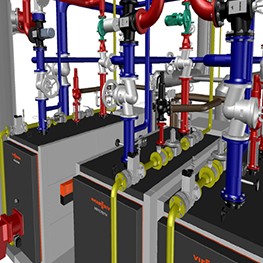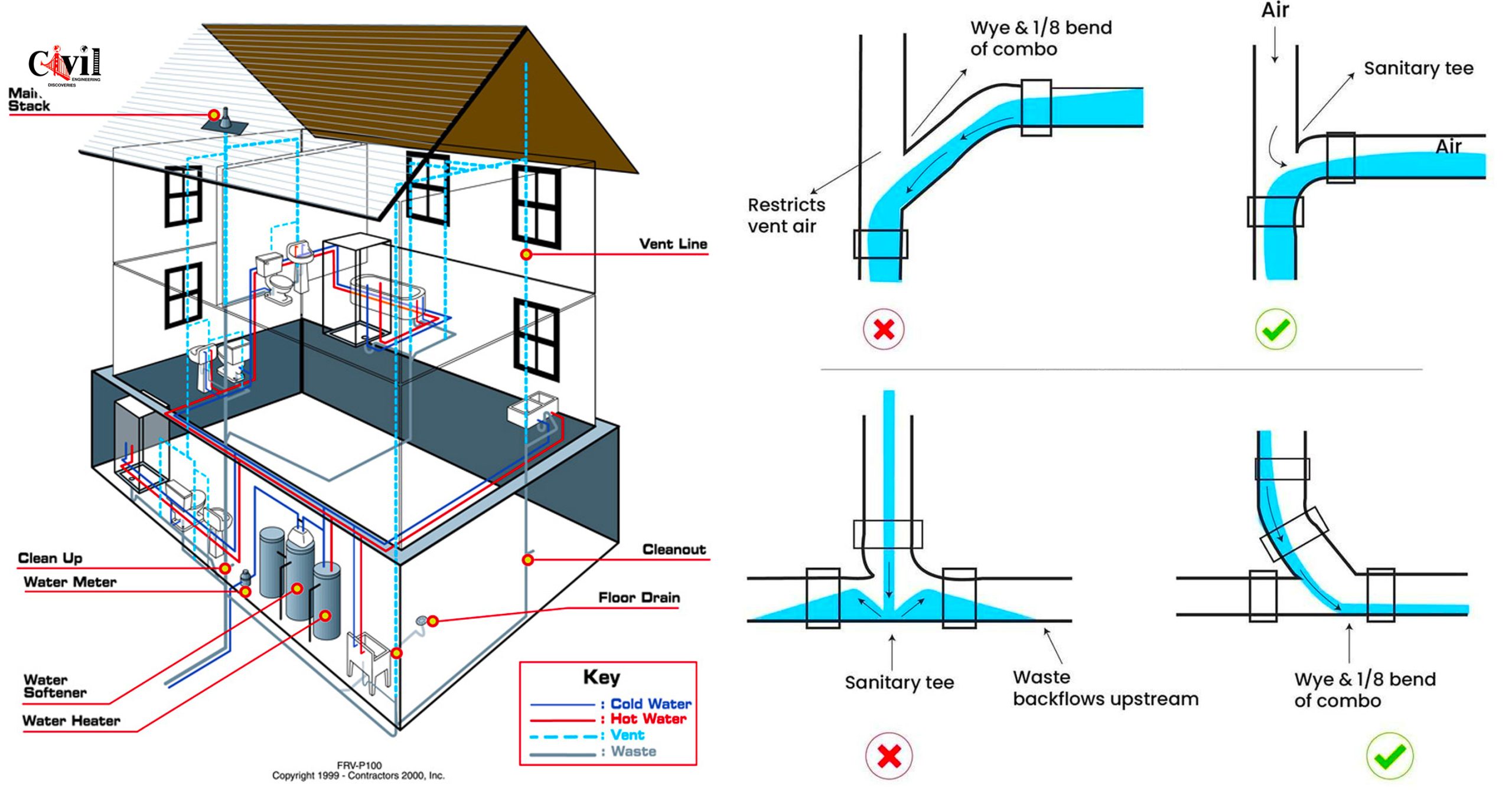The Complete Guide to Your House's Plumbing System Anatomy
The Complete Guide to Your House's Plumbing System Anatomy
Blog Article
Every person is bound to have their own unique idea in relation to Plumbing Installation 101: All You Need to Know.

Comprehending how your home's plumbing system functions is essential for every homeowner. From supplying tidy water for alcohol consumption, cooking, and showering to securely getting rid of wastewater, a well-kept pipes system is important for your family's health and wellness and comfort. In this comprehensive guide, we'll check out the complex network that comprises your home's pipes and deal ideas on maintenance, upgrades, and dealing with usual concerns.
Introduction
Your home's plumbing system is greater than simply a network of pipes; it's a complex system that ensures you have accessibility to clean water and effective wastewater removal. Understanding its elements and exactly how they interact can aid you protect against expensive repairs and ensure everything runs smoothly.
Basic Components of a Pipes System
Pipelines and Tubes
At the heart of your pipes system are the pipes and tubing that lug water throughout your home. These can be constructed from different materials such as copper, PVC, or PEX, each with its benefits in regards to toughness and cost-effectiveness.
Fixtures: Sinks, Toilets, Showers, and so on.
Components like sinks, bathrooms, showers, and tubs are where water is used in your home. Recognizing just how these components link to the pipes system assists in identifying problems and planning upgrades.
Shutoffs and Shut-off Factors
Valves control the flow of water in your plumbing system. Shut-off valves are vital during emergencies or when you require to make fixings, enabling you to isolate parts of the system without disrupting water circulation to the whole home.
Water Supply System
Key Water Line
The main water line connects your home to the metropolitan supply of water or a private well. It's where water enters your home and is dispersed to various components.
Water Meter and Pressure Regulator
The water meter actions your water usage, while a stress regulator ensures that water flows at a risk-free pressure throughout your home's pipes system, avoiding damages to pipelines and fixtures.
Cold Water vs. Warm water Lines
Comprehending the difference in between cold water lines, which supply water directly from the primary, and hot water lines, which lug heated water from the hot water heater, assists in troubleshooting and preparing for upgrades.
Drain System
Drain Piping and Traps
Drain pipelines bring wastewater far from sinks, showers, and bathrooms to the sewer or septic system. Traps protect against sewer gases from entering your home and likewise trap particles that could trigger clogs.
Air flow Pipelines
Ventilation pipelines allow air into the water drainage system, stopping suction that can slow down water drainage and trigger traps to vacant. Proper air flow is important for keeping the integrity of your plumbing system.
Relevance of Proper Drain
Ensuring appropriate drainage avoids back-ups and water damage. On a regular basis cleaning up drains pipes and preserving catches can avoid expensive repairs and prolong the life of your pipes system.
Water Heating System
Kinds Of Water Heaters
Hot water heater can be tankless or traditional tank-style. Tankless heaters warm water as needed, while containers store heated water for prompt usage.
Upgrading Your Pipes System
Reasons for Upgrading
Updating to water-efficient components or replacing old pipes can enhance water high quality, minimize water costs, and increase the value of your home.
Modern Pipes Technologies and Their Advantages
Discover modern technologies like clever leak detectors, water-saving toilets, and energy-efficient water heaters that can save money and decrease ecological influence.
Expense Factors To Consider and ROI
Compute the in advance expenses versus long-term cost savings when thinking about pipes upgrades. Several upgrades spend for themselves through reduced utility expenses and fewer repair services.
Just How Water Heaters Attach to the Pipes System
Understanding how water heaters connect to both the cold water supply and warm water circulation lines aids in diagnosing issues like insufficient hot water or leaks.
Maintenance Tips for Water Heaters
Regularly purging your hot water heater to get rid of sediment, inspecting the temperature settings, and examining for leaks can extend its lifespan and enhance energy efficiency.
Usual Pipes Concerns
Leakages and Their Reasons
Leakages can occur due to maturing pipes, loose fittings, or high water pressure. Dealing with leaks promptly protects against water damages and mold growth.
Clogs and Blockages
Obstructions in drains pipes and bathrooms are commonly caused by purging non-flushable products or an accumulation of oil and hair. Making use of drain screens and being mindful of what drops your drains can prevent clogs.
Indicators of Pipes Issues to Watch For
Low tide stress, sluggish drains, foul odors, or abnormally high water costs are indicators of prospective plumbing problems that need to be attended to quickly.
Plumbing Upkeep Tips
Regular Examinations and Checks
Arrange annual pipes evaluations to catch concerns early. Try to find signs of leakages, rust, or mineral build-up in faucets and showerheads.
DIY Upkeep Tasks
Easy jobs like cleansing faucet aerators, looking for toilet leakages utilizing dye tablet computers, or protecting exposed pipelines in cold environments can avoid major plumbing concerns.
When to Call a Professional Plumbing Professional
Know when a plumbing concern needs professional knowledge. Trying complicated fixings without appropriate understanding can lead to even more damage and greater repair expenses.
Tips for Reducing Water Use
Basic habits like dealing with leaks immediately, taking shorter showers, and running complete lots of laundry and recipes can conserve water and reduced your energy expenses.
Eco-Friendly Pipes Options
Consider lasting pipes materials like bamboo for flooring, which is durable and environmentally friendly, or recycled glass for counter tops.
Emergency situation Preparedness
Actions to Take During a Plumbing Emergency
Know where your shut-off shutoffs are located and exactly how to switch off the supply of water in case of a ruptured pipeline or major leakage.
Relevance of Having Emergency Get In Touches With Convenient
Keep call information for regional plumbing professionals or emergency situation solutions conveniently offered for quick reaction throughout a pipes crisis.
Environmental Impact and Conservation
Water-Saving Components and Devices
Installing low-flow faucets, showerheads, and bathrooms can considerably minimize water use without sacrificing performance.
Do It Yourself Emergency Fixes (When Relevant).
Temporary solutions like making use of air duct tape to spot a dripping pipeline or placing a container under a leaking tap can minimize damage until a professional plumbing technician gets here.
Verdict.
Understanding the makeup of your home's pipes system empowers you to maintain it efficiently, saving time and money on repairs. By complying with routine upkeep regimens and remaining informed about modern pipes modern technologies, you can guarantee your pipes system runs effectively for many years to find.
The Anatomy of Your Home s Plumbing System
Understanding the anatomy of your home s plumbing system is essential for any homeowner. It not only helps in identifying potential issues but also facilitates effective communication with professionals when repairs or upgrades are needed. Your home s plumbing system is more than just pipes and faucets; it s a complex network that ensures the efficient and hygienic flow of water in and out of your house. In this blog, we ll dissect the crucial components of your home s plumbing system. For those in Antelope Valley, Brock Plumbing is your trusted partner for all your plumbing needs, ensuring your system functions smoothly and efficiently.
Water Supply System
Main Water Line: This is where your home s plumbing system begins. The main water line connects your home to the public water supply or a private well. Pipes and Shut-off Valves: Pipes distribute water throughout your home. Shut-off valves are crucial for controlling the flow of water and making repairs without shutting off the entire system. Drainage System
Drain Pipes: These pipes carry waste and water away from sinks, toilets, and showers. Vents: Vents allow sewer gases to escape and help maintain proper pressure in the drainage pipes, ensuring efficient flow of wastewater. Traps: Every fixture has a trap, a U-shaped pipe that holds water and prevents sewer gases from entering your home. The most common is the P-trap under sinks. Fixtures and Appliances
Fixtures and appliances are the most interacted with parts of your plumbing system. They include sinks, toilets, showers, dishwashers, and washing machines. Each fixture and appliance has its own supply and drainage connection, ensuring they receive clean water and can dispose of wastewater effectively.
Water Heating System
Your water heater is a crucial component, providing hot water to various fixtures and appliances in your home. It can be tank-based or tankless, with each type having its own set of advantages and maintenance requirements. Regular maintenance is essential to ensure efficient operation and extend the lifespan of the unit.
Sump Pump
In areas prone to flooding or with high water tables, a sump pump is an essential part of the plumbing system. It s installed in the lowest part of your basement or crawlspace and pumps out water that accumulates, preventing flooding and protecting your home from water damage.
Septic System
Homes that are not connected to a municipal sewer system have a septic system and an underground wastewater treatment structure. Understanding how to maintain your septic system is crucial to prevent backups, odors, and early system failure.
Conclusion
Your home s plumbing system is a complex and essential network, ensuring the efficient and hygienic flow of water in and out of your property. Understanding its key components helps in maintaining it properly and identifying issues before they escalate into major problems. For residents in Antelope Valley, Brock Plumbing is dedicated to providing top-notch services, ensuring that every part of your plumbing system is in perfect working order. Trust our team of professionals to handle all your plumbing needs, ensuring your home remains comfortable, safe, and well-maintained.
https://brockplumbinganddrains.com/blog/the-anatomy-of-your-homes-plumbing-system/

Hopefully you enjoyed reading our topic on Anatomy of a House: Understanding the Components. Thanks a lot for taking time to browse our piece of content. Appreciated our article? Please share it. Let somebody else discover it. Many thanks for your time. Kindly pay a visit to our website back soon.
Click For More Information Report this page